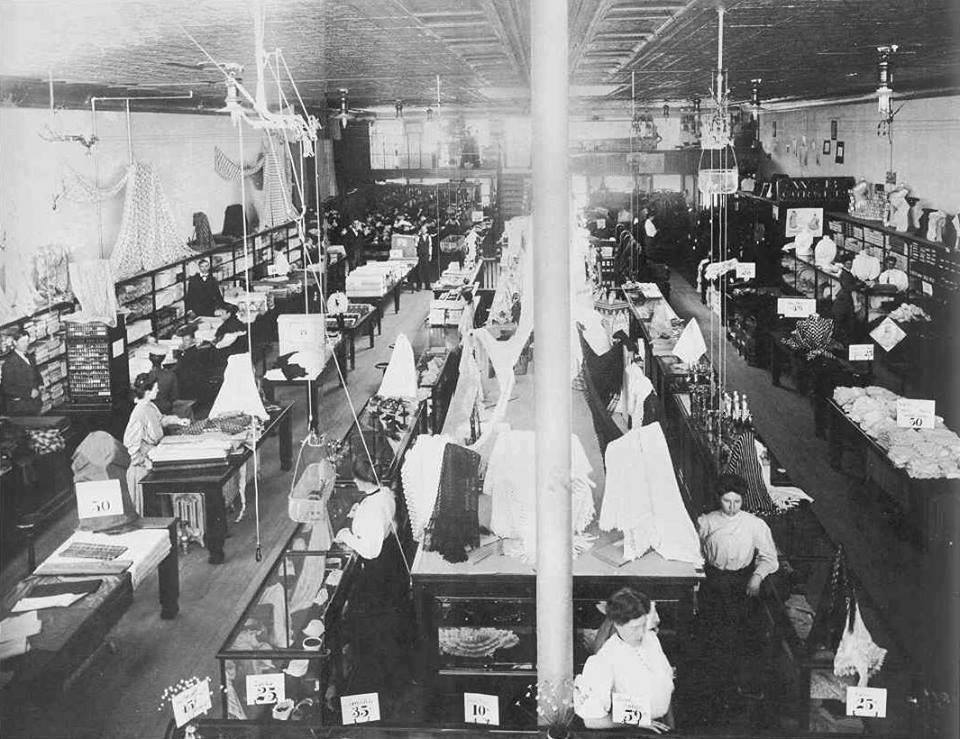
Today in Feminist History is our daily recap of the major milestones and minor advancements that shaped women’s history in the U.S.—from suffrage to Shirley Chisholm and beyond. These posts were written by, and are presented in homage to, our late staff historian and archivist, David Dismore.
May 1, 1895: A special New York State Assembly committee report investigating conditions of female and child labor in New York City was submitted today, and it paints a bleak portrait of working conditions for those who earn their living at department store counters, in factories, or through home work.

The typical working day in New York City’s large mercantile establishments is 8 a.m. to 6 p.m., with 30 to 45 minutes for lunch Monday through Saturday, though in some stores employees work later on Saturdays, often until 9 or 10 p.m.
In one of the small stores surveyed, the hours were 8 a.m. to 9 p.m. Monday through Friday, and until 11 p.m. or midnight on Saturdays, with some employees working from 8 a.m. until noon on Sundays, though they receive extra compensation for their Sunday work.
Large numbers of girls 14 to 16 years of age are employed at $1.50 a week and up. The insufficient number of truant officers employed by the Board of Education means that they can rarely do personal inspections of establishments looking for school-age workers, and may tend to take the word of employers that they do not employ children under 14. Hiring of children even under that age is not barred under all circumstances by State law at present.
Impoverished parents also seem willing to fill out certificates stating that their children are old enough to work, even if this is not the case. These factors enable “sweat shop” operators to employ young children for at least 60 hours a week in return for $ 1.75 to $ 2.00 pay.
The law passed seven years ago requiring employers to provide seats for women workers has not been generally observed, and is in need of amendment to make it better enforced.
The clothing industry has been carefully examined, and there is a “general and constant violation” of the factory laws and of the regulations of the Board of Health by those who employ workers in shops and tenements.
In one example of the present risks to public health, an employer’s child became sick with scarlet fever, and the Health Inspector only ordered the employer to close the door between his living room and the workshops, but not shut down, a choice the inspector is permitted to make.
Later, a Factory Inspector finally ordered the employer to stop work, but infected coats had already been sent to the wholesaler. It was not until nine days after the initial report of the child’s illness was made to the Health Department by the family physician that the infected clothing was tracked down and fumigated, clear proof that the system isn’t working well in tenements.
Though the committee was able to give an interim report today, further study is needed, especially since there is a great reluctance on the part of employees to testify about working conditions until they can do so in private executive sessions with no employers present. Hopefully the full report, when it’s completed, will help bring about sufficient outrage over current working conditions that they will be improved in the future through both labor union activism and appropriate legislation.





